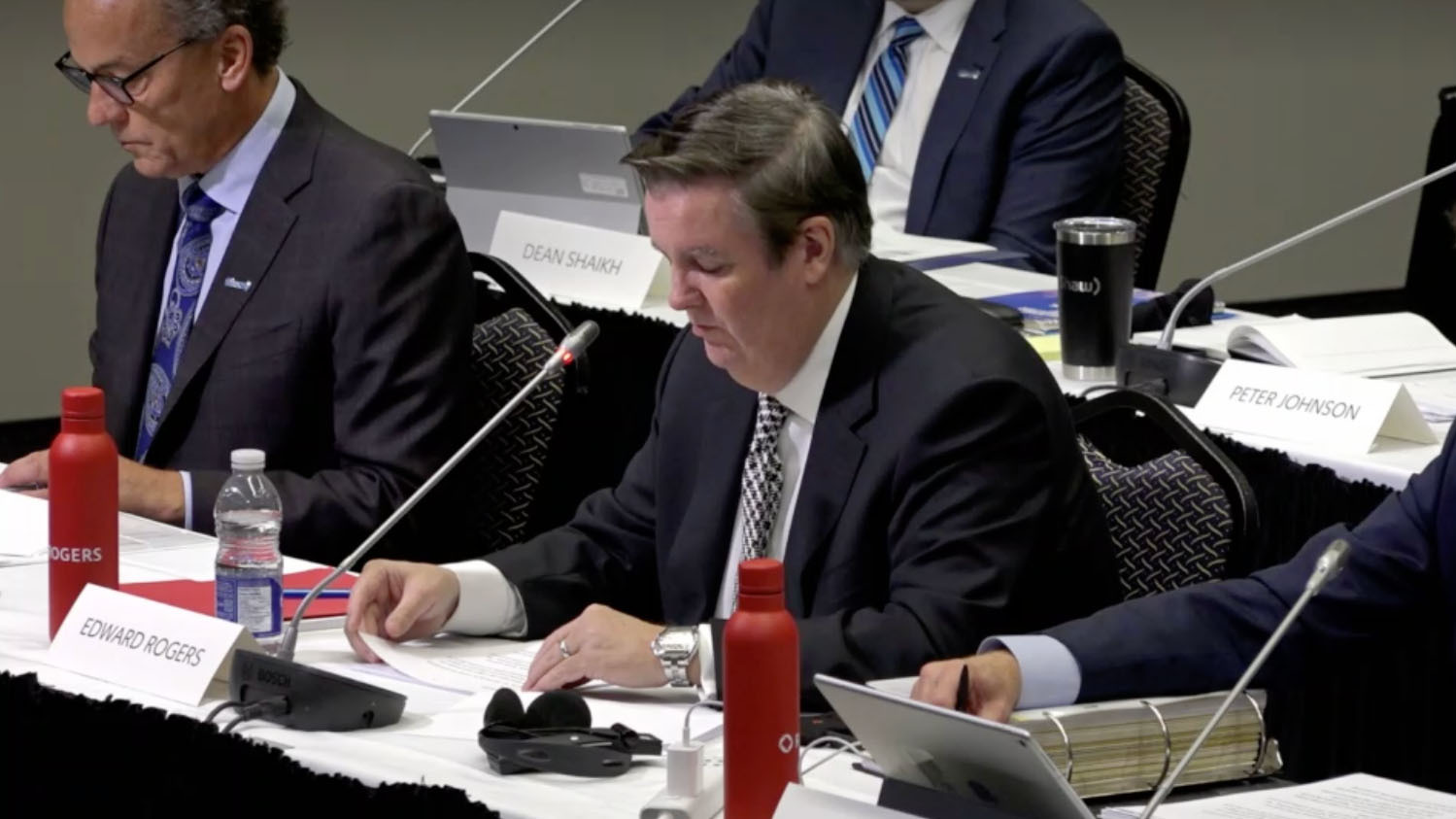
Canadians got their first look into a $26 billion transaction that will impact the broadcast and telecommunications industries as a whole.
Representatives from Shaw and Rogers met in front of the Canadian Radio-television and Telecommunications Commission (CRTC) Monday to make their case on why a joint merger is the best for Canada.
Ian Scott, CRTC’s chair, started the first day of a five-day hearing with a statement reminding representatives the hearing will only deal with the broadcasting aspects of this deal. Companies against the transaction have voiced concerns the merger will give Rogers unprecedented power to negotiate fees to carry these channels.
Interventions have been filed by numerous organizations, including Blue Ant Media, which owns MobileSyrup.
While telephone, wireless, and internet services are an important part of the merger, they will be dealt with by the Competition Bureau and Innovation, Science and Economic Development Canada. Concerns have been raised the merger would reduce the competition in the wireless market.
“It doesn’t appear there would be increased competition in those communities…I’m not getting your point that a combination of Rogers and Shaw will create more competition.” – Ian Scott, CRTC chair
This is the only hearing that will be open to the public.
Sat in the front row after a fresh round of family drama, Edward Rogers, the chairman for Rogers board of directors, shared a statement as part of the opening remarks but spoke little after that.
Along with Brad Shaw, the CEO of Shaw, the two broadcast heirs promised to stay committed to a deal they say will close the digital divide between rural and urban communities.
“By joining Rogers, we will expand and accelerate the multi-generational investments needed to close the digital divide and compete more effectively across Western Canada, while expanding competition to communities that currently have little or no choice,” Shaw said.
Rogers currently offers services in Ontario and the Atlantic Provinces. Shaw operates in Western provinces including B.C, Alberta, Saskatchewan, and Manitoba.
Despite Scott’s earlier warning, some talk outside of the broadcast realm did occur.
Dean Prevost, president of Rogers Connected Home, said the merger would allow them to build 5G networks across the nation, spreading to areas each company had not ventured in on its own.
The details
Prevost said there has been a growing divide between the country’s urban and rural areas, specifically in Indigenous communities, and in order to overcome these challenges, there’s a need to invest in “competitive network infrastructure.” This will be done through four contributions.
The first is to enhance competitiveness. He says many in smaller communities in B.C and Alberta, Telus is the only option and there is no competition. The second is to bridge the digital divide by investing funds in Indigenous-specific content. The third and fourth pillar is to offer more affordable options and allow everyone to transition to the “digital world.”
But Scott questioned how more competition would be created in the target communities. “Where is the competition enhanced,” he questioned. “It doesn’t appear there would be increased competition in those communities…I’m not getting your point that a combination of Rogers and Shaw will create more competition.”
“[It] happens in the fringes of Shaws network today,” Ted Woodhead, Rogers senior vice-president of regulatory said. With a larger scale, the company will be able to expand services from the “fringe” to areas only addressed by a few broadcasters. He emphasized not all Internet Protocol Television (IPTV) services are the same and the one offered by Rogers is “unique.”
Executives also promised the network would invest in community journalism, create opportunities for Indigenous content creators, and carry 40 independent programming services for three years. At this time, more than 100 companies are carried collectively by Shaw and Rogers. “We felt it was fair, it was reasonable,” Pam Dinsmore, vice president regulatory, said on the three-year timeline.
Image source: CRTC (screenshot)


